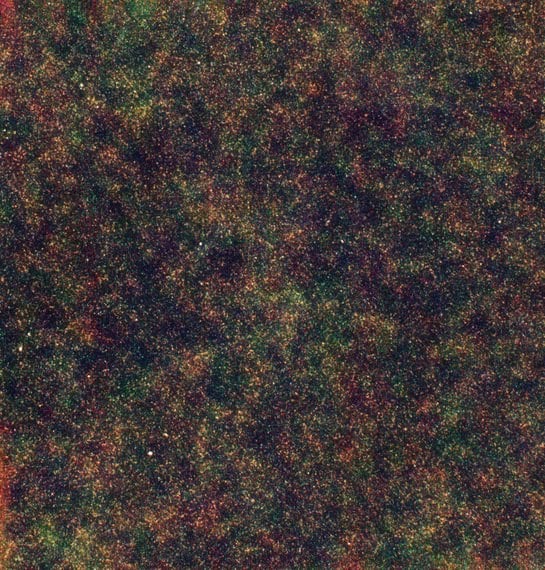[/caption]
Wow. Just wow. Each of the colored dots in this new image from the Herschel telescope is a galaxy containing billions of stars. These are distant luminous infrared galaxies, and appear as they did 10–12 billion years ago, packed together like grains of sand on a beach, forming large clusters of galaxies by the force of their mutual gravity.
"These amazing new results from Herschel are just a taste of things to come, as Herschel continues to unlock the secrets of the early stages of star birth and galaxy formation in our Universe," said Dr. David Parker, Director of Space Science and Exploration at the UK Space Agency.
The galaxies are color coded in blue, green, and red to represent the three wavebands used for Herschel's observation. Those appearing in white have equal intensity in all three bands and are the ones forming the most stars. The galaxies shown in red are likely to be the most distant, appearing as they did around 12 billion years ago.
For more than a decade, astronomers have puzzled over strangely bright galaxies in the distant Universe. These luminous infrared galaxies appear to be creating stars at such phenomenal rates that they defy conventional theories of galaxy formation.
Now ESA's Herschel infrared space observatory, with its ability for very sensitive mapping over wide areas, has seen thousands of these galaxies and pinpointed their locations, showing for the first time just how closely they are sardined together.
The mottled effect in the image gives away this clustering. All the indications are that these galaxies are busy crashing into one another, and forming large quantities of stars as a result of these violent encounters. This image is part of the Herschel Multi-tiered Extragalactic Survey (HerMES) Key Project, which studies the evolution of galaxies in the distant, ancient Universe. The project uses the SPIRE (Spectral and Photometric Imaging REceiver) instrument on Herschel and has been surveying large areas of the sky, currently totalling 15 square degrees, or around 60 times the apparent size of the Full Moon.
This particular image was taken in a region of space called the Lockman hole, which allows a clear line of sight out into the distant Universe. This 'hole' is located in the familiar northern constellation of Ursa Major, The Great Bear.
HerMES will continue to collect more images, over larger areas of the sky in order to build up a more complete picture of how galaxies have evolved and interacted over the past 12 billion years.
Sources: UKSA,
Online Showcase of Herschel Images
 Universe Today
Universe Today
